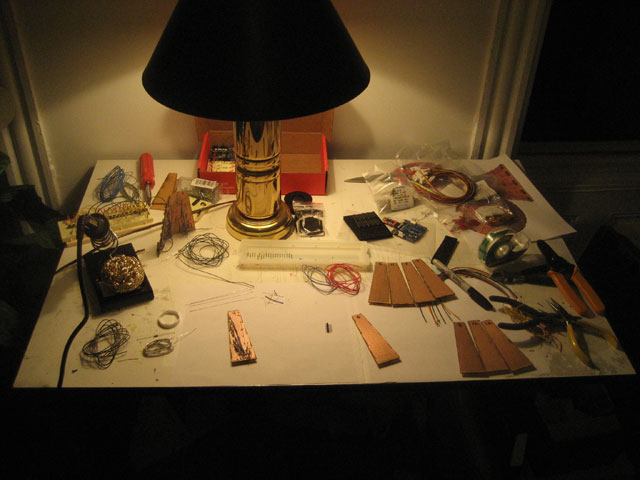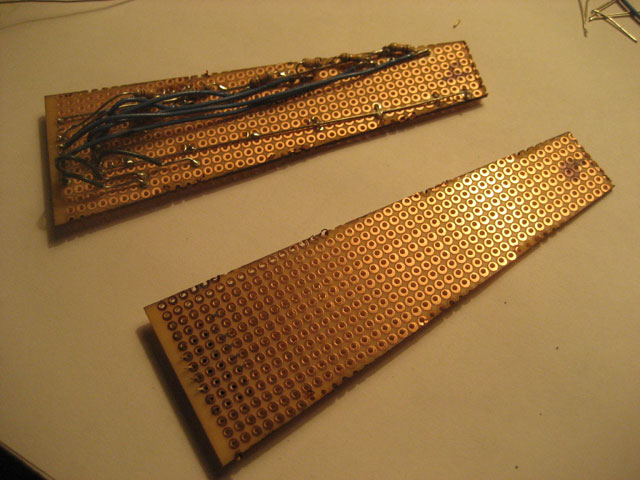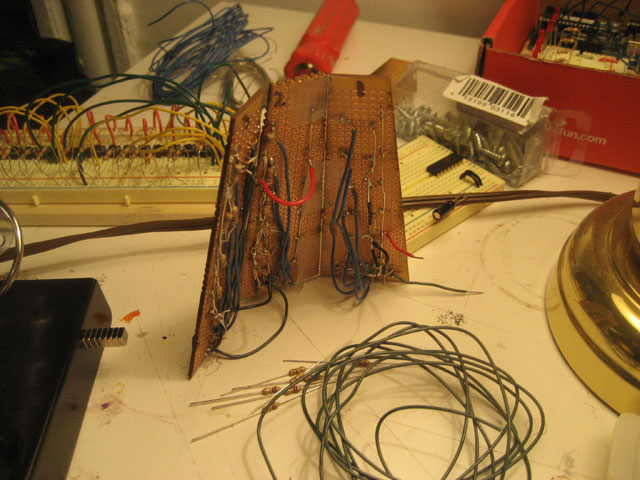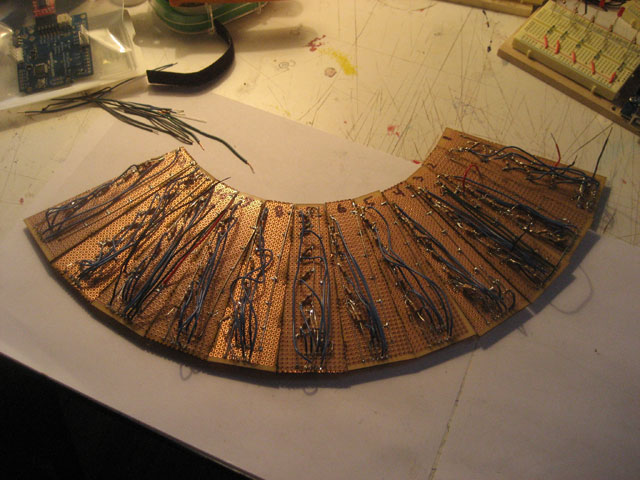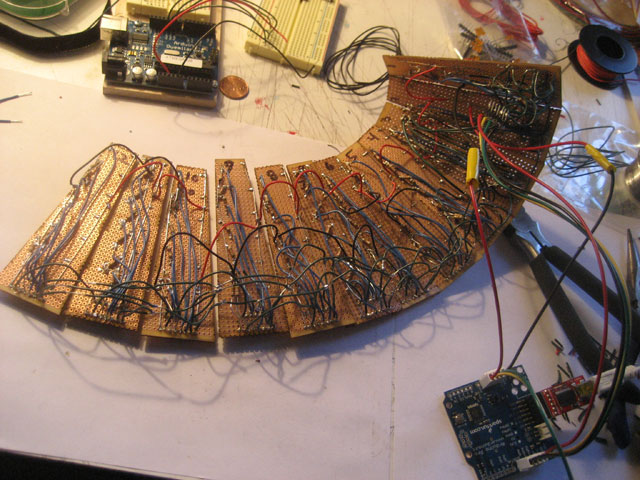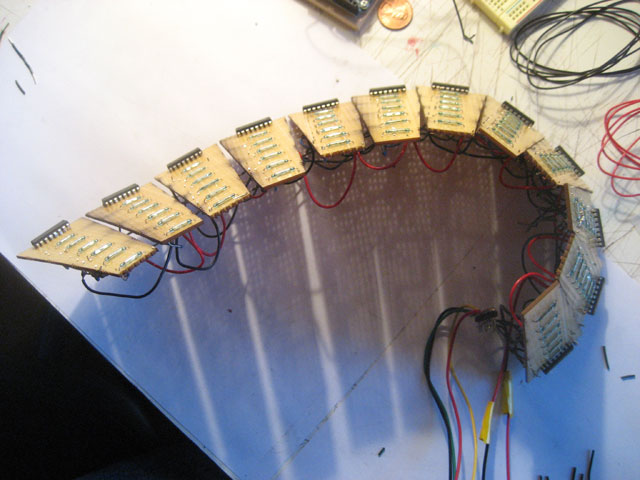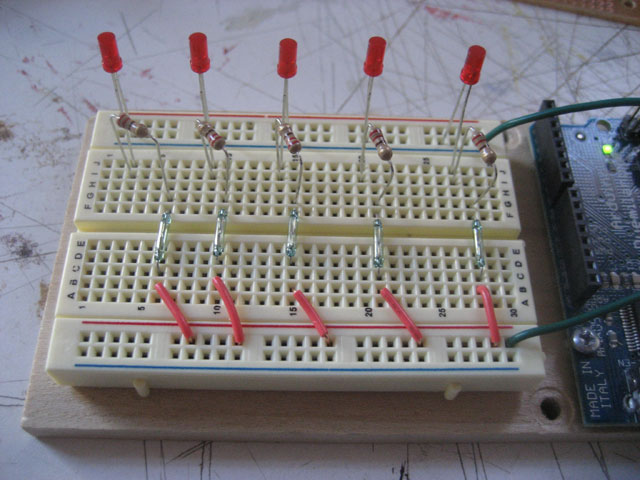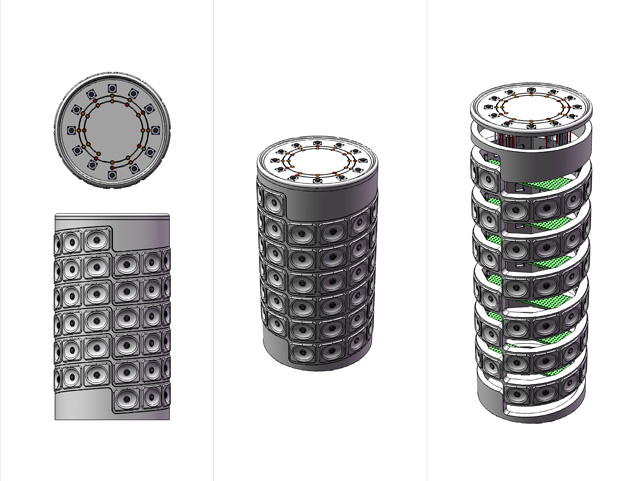
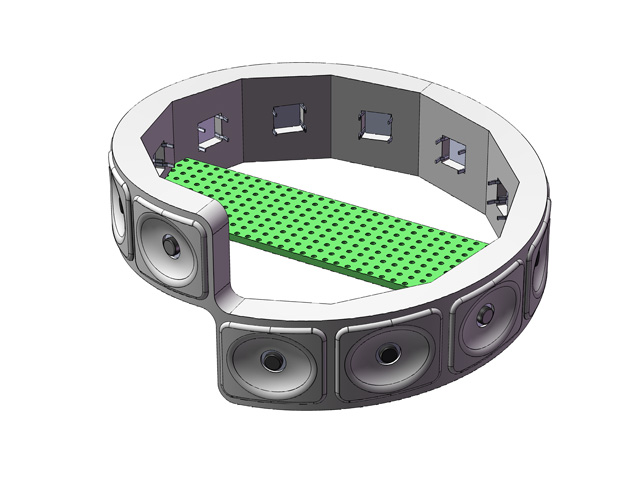
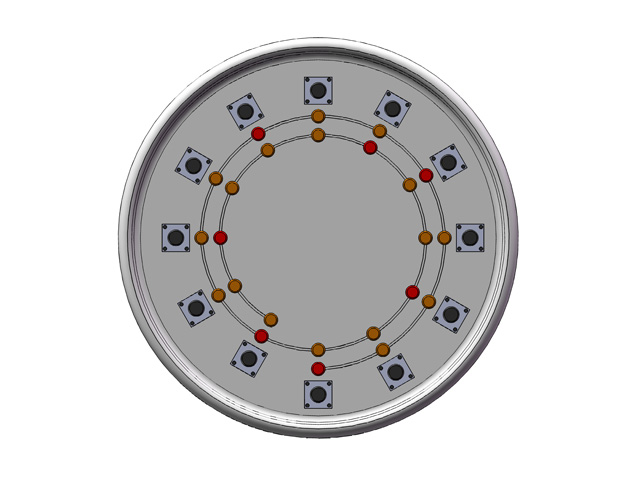
I have been working away on the design of my sound spiral. This physical device will connect through USB to a laptop running Processing or MaxMSP. The physical device is a media controller, and all sounds and color visualization will be made through the connected computer’s screen and sound system.
Currently the design is modular, made of single-octave spiraling rings that stack together. The prototype will have 6 octaves, each with 12 push button “keys”. Each ring has its own perf board inside, making it much easier to wire the buttons to each multiplexer, and then to the arduino stamp and powersupply on the base layer.
The cover has an additional 12 buttons and 24 LEDS that illuminate to build custom chordal relationships. The red LEDs indicate 1 -3 -5 -7 -9 -11 -13 tones, and the orange LEDs are all the in between notes, used less frequently in chords. Pressing the button will cycle through LED 1, LED 2, LED 1+2, OFF. After configuring the chord, then a single key press will play all the notes in that chord.
I’m hoping to find out, through user testing, whether this degree of customization is worth it or not, as it would be much simpler to use if there were only major and minor chords preconfigured. This version of the design is really being built for just that: user testing. Once there is a physical device to play, I hope to get a huge amount of feedback on the design and interface.
Later today I should get my parts in the mail, so I look forward to testing the serial communication between the Arduino and Processing, wiring 72+ physical buttons, resolving power issues, double checking fitment of parts, and finally sending out for the 3D CAD data to be rapid prototyped. Stay tuned for additional updates.

